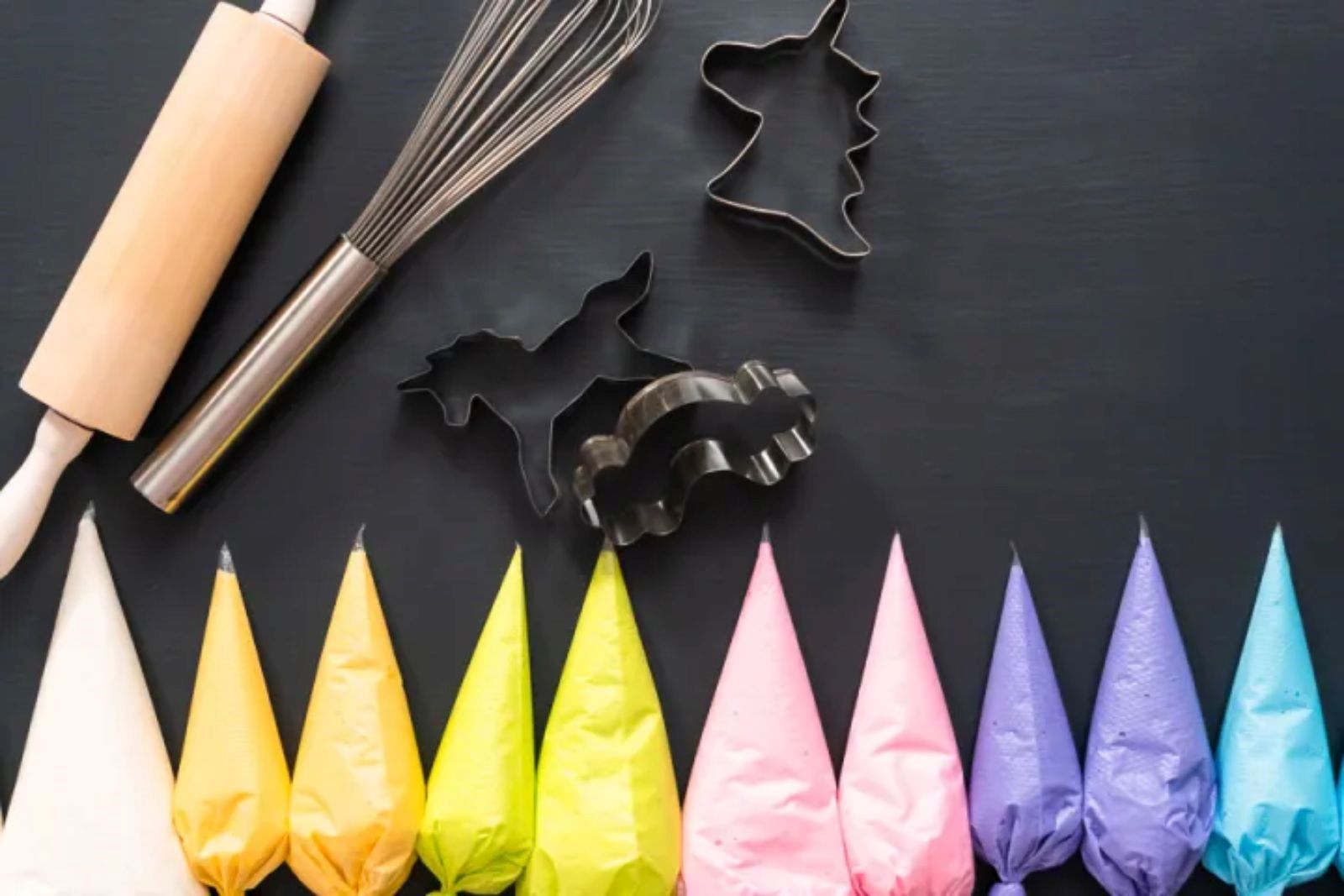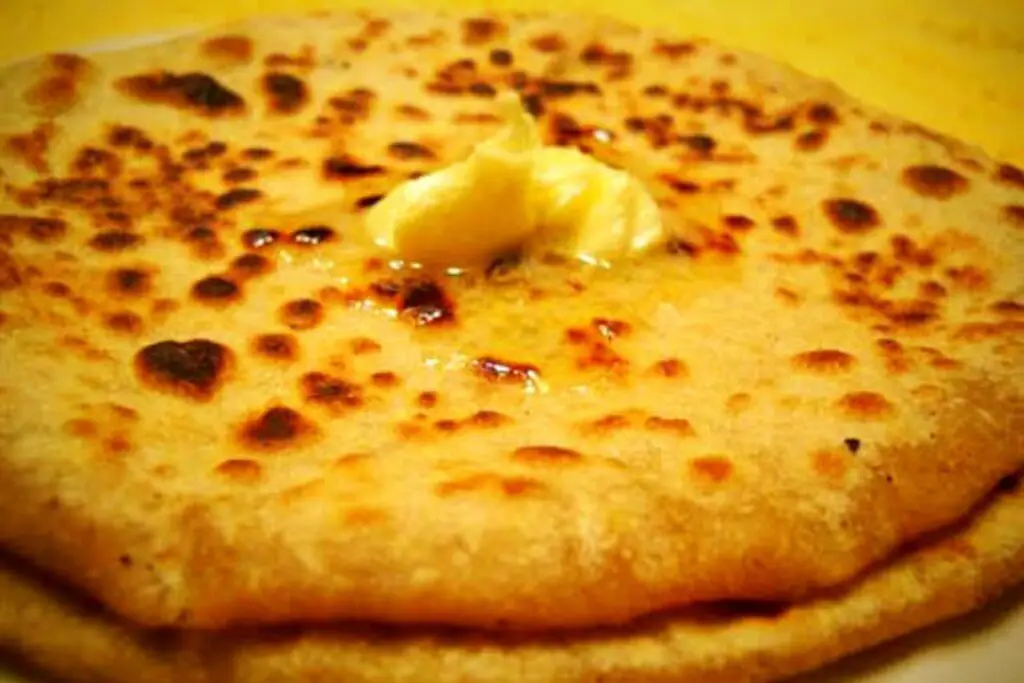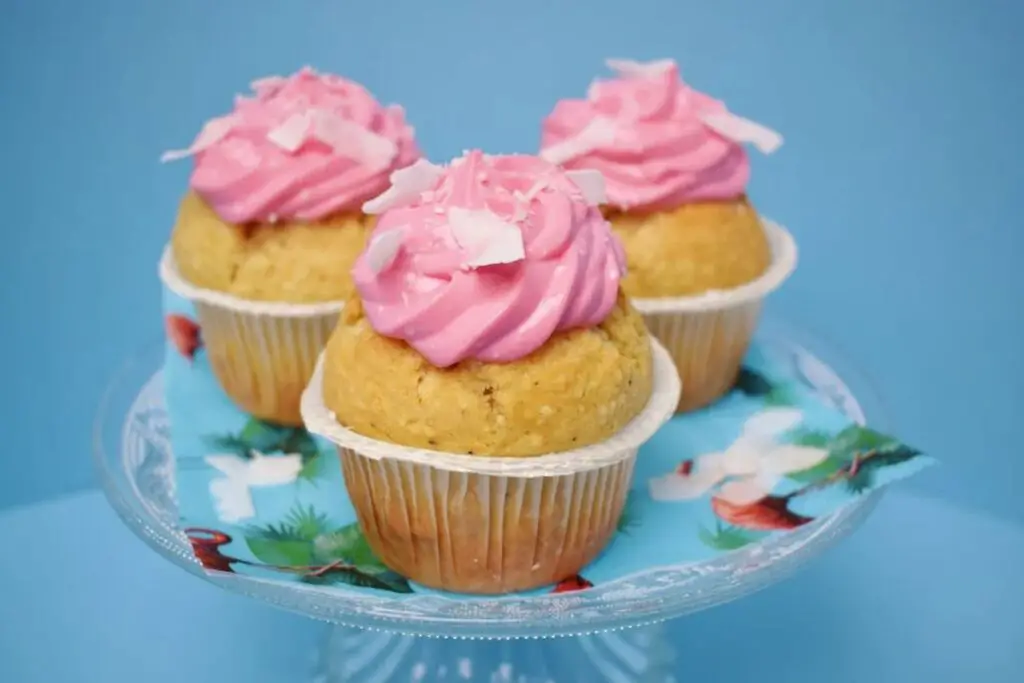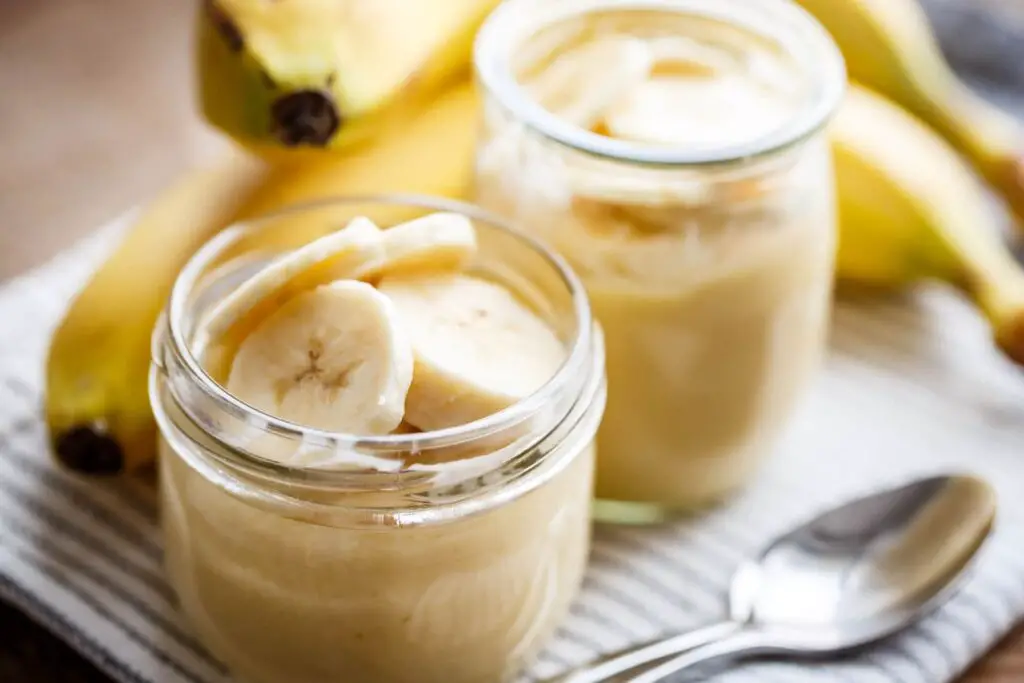
Royal icing is a versatile and popular icing used in various culinary creations, from decorating elegant cakes to intricately designed cookies. Its smooth texture and ability to harden make it an excellent choice for intricate designs and delicate details. However, if you find yourself with leftover royal icing or want to prepare it in advance for future use, freezing it can be a convenient solution. Freezing royal icing allows you to store it for an extended period, ensuring its freshness and preserving its quality until you’re ready to use it again.
Here’s a step-by-step guide on how to freeze royal icing:
Step 1: Allow the royal icing to cool down
Allowing royal icing to cool down before freezing is important for two reasons: proper setting and prevention of condensation.
- Proper Setting: Royal icing is a mixture of powdered sugar, egg whites or meringue powder, and water. When freshly prepared, the icing may be warm due to the mixing process or from the heat of the meringue powder dissolving. If you freeze the icing while it is still warm, it may not set properly. Freezing warm royal icing can lead to a soft and gooey texture, rather than the firm and dry consistency you desire for decorating cookies or cakes. Allowing the icing to cool down to room temperature ensures that it sets properly when frozen, maintaining its desired texture.
- Prevention of Condensation: When warm or hot items are placed in the freezer, they can create condensation as they cool down. Condensation occurs when warm air comes into contact with a cooler surface, causing water vapor in the air to turn into liquid droplets. If you freeze warm royal icing directly, the temperature difference between the warm icing and the cold freezer can cause condensation to form on the surface of the icing. This condensation can lead to water droplets pooling on the icing, making it wet and potentially causing the decorations to dissolve or become runny when thawed. Allowing the icing to cool down completely before freezing helps to minimize the risk of condensation, ensuring that the icing remains dry and intact during the freezing process.
Step 2: Portion the royal icing
Portioning royal icing before freezing offers several benefits, including easier thawing and more convenient usage later on. Here’s why dividing the icing into smaller portions is beneficial:
- Easier Thawing: Freezing the entire batch of royal icing might not be practical if you only need a small amount for a future project. By portioning the icing before freezing, you can thaw only the amount you need, saving you time and effort. Smaller portions thaw more quickly and evenly compared to a large block of frozen icing. This allows you to have a ready-to-use portion of icing without having to thaw the entire batch.
- Convenience and Versatility: Portioning royal icing into smaller amounts provides flexibility and convenience when you want to use it later. For example, if you plan to decorate cookies or cakes, having individually portioned icing makes it easy to thaw and use different colors without defrosting the entire batch. You can freeze the icing in separate containers or divide it into smaller freezer bags, making it simple to grab the desired amount whenever you need it.
- Reduced Waste: If you freeze the entire batch of royal icing but only use a portion of it, you may end up wasting the remaining icing if it’s not used before it spoils. By portioning the icing, you can freeze only what you need and avoid wasting any excess. This way, you can enjoy the convenience of having pre-made icing available while minimizing waste.
- Better Storage Organization: Dividing the royal icing into smaller portions makes it easier to store and organize in your freezer. Whether you use separate containers or freezer bags, labeled with the date and quantity, it allows you to keep track of your icing inventory. This way, you can easily identify and access the amount you need without digging through a large container or dealing with a frozen block of icing.
Can I freeze royal icing in a glass container?
It is generally not recommended to freeze royal icing directly in a glass container. Glass containers can be more susceptible to cracking or breaking when exposed to extreme temperature changes, such as freezing. It is safer to freeze royal icing in airtight, freezer-safe plastic containers or wrap it in plastic wrap and aluminum foil before placing it in the freezer.
Can I freeze royal icing in bulk and then portion it later?
Yes, you can freeze royal icing in bulk and portion it later. Freezing royal icing in a larger batch and then portioning it into smaller portions allows for easier thawing and usage as needed. Be sure to wrap and label each portion before freezing to maintain its quality and to easily identify and use the desired amount when needed.
Step 3: Wrap the royal icing
Wrapping royal icing tightly with plastic wrap before freezing is essential to prevent freezer burn and maintain its freshness. Here’s why this step is important:
- Protection against Freezer Burn: Freezer burn occurs when frozen food is exposed to air, causing moisture to evaporate from the surface. If royal icing is not properly wrapped, it can become dehydrated and develop a dry, shriveled appearance. Additionally, freezer burn can affect the taste and texture of the icing, leading to a stale or off-flavor. By tightly wrapping each portion of royal icing with plastic wrap, you create a protective barrier that helps prevent air from reaching the icing, reducing the risk of freezer burn.
- Preservation of Freshness: Royal icing, like other food items, can absorb odors and flavors from other foods in the freezer if it’s not properly wrapped. The plastic wrap acts as a seal, preventing the icing from picking up any unwanted smells or tastes from surrounding freezer items. It helps maintain the freshness and integrity of the icing, ensuring that it retains its original flavor and aroma until it is ready to be used.
- Prevention of Moisture Loss: Royal icing contains water, which can evaporate if exposed to the dry air inside the freezer. This moisture loss can lead to changes in the consistency and texture of the icing, making it less suitable for decorating purposes. By tightly wrapping the icing with plastic wrap, you create a barrier that helps retain the moisture within the icing, keeping it in optimal condition for future use.
- Hygienic Storage: Wrapping each portion of royal icing individually with plastic wrap helps maintain hygiene by protecting it from potential contaminants in the freezer. It prevents cross-contamination between different food items and reduces the risk of any foreign substances coming into contact with the icing.
Is it necessary to wrap royal icing before freezing?
Yes, it is necessary to wrap royal icing before freezing. Wrapping the icing tightly helps protect it from freezer burn and prevents moisture loss, which can affect its texture and consistency. The wrapping also helps maintain the freshness and quality of the icing during freezing, ensuring it is in optimal condition when thawed and ready to be used.
Step 4: Add an extra layer of protection
Adding an extra layer of protection to wrapped royal icing by wrapping it with aluminum foil provides additional insulation against air and moisture. Here’s why this step is beneficial:
- Enhanced Barrier against Air and Moisture: While plastic wrap provides a good initial barrier, it may not be completely airtight. By wrapping the royal icing with aluminum foil on top of the plastic wrap, you create an additional layer of protection that helps seal out air and moisture more effectively. Aluminum foil has a higher resistance to air and moisture transfer compared to plastic wrap, reducing the risk of freezer burn and maintaining the icing’s freshness for a longer period.
- Improved Freezer Performance: Aluminum foil has excellent thermal conductivity, which means it helps maintain a more consistent temperature around the royal icing. This can be particularly beneficial if your freezer has temperature fluctuations. The foil acts as an insulating layer, reducing the chances of temperature variations that could affect the quality of the icing. It helps ensure that the icing remains at a stable temperature throughout the freezing process, which is crucial for maintaining its texture and appearance.
- Protection from Light Exposure: Light exposure can potentially degrade the quality of certain foods, including royal icing. By wrapping the icing with aluminum foil, you create a light-reflecting barrier that helps shield it from any light sources in the freezer. This added protection helps maintain the icing’s color and prevents any potential light-induced changes that could affect its visual appeal.
- Durability and Ease of Handling: Aluminum foil provides an extra layer of durability, protecting the wrapped royal icing from any accidental bumps or scrapes that might occur in the freezer. It helps maintain the integrity of the icing, ensuring it stays intact until it is ready to be used. Additionally, the foil makes it easier to handle and stack the wrapped portions of icing in the freezer, preventing any damage that might occur during storage.
Step 5: Label and date the package
Labeling and dating the packages of frozen royal icing is crucial for the organization and to ensure you can use the icing in a timely manner. Here’s why this step is important:
- Easy Identification: By labeling each package with a description, such as “Royal Icing” or “White Icing,” you can easily identify the contents without having to open or thaw them. This is particularly helpful if you have multiple types or colors of royal icing stored in the freezer. Clear labeling allows you to quickly locate the specific icing you need when the time comes to thaw and use it.
- FIFO Method (First In, First Out): Dating each package with the freezing date helps you implement the FIFO method. FIFO means using the oldest items first to ensure they are used before newer ones. By dating the packages, you can keep track of when the royal icing was frozen, ensuring that you use the oldest batches first. This practice prevents any icing from being stored for an extended period and potentially losing quality over time. Using the oldest packages first ensures that you make the most of the freshness and optimal quality of the icing.
- Storage Duration Awareness: Labeling the packages with the freezing date also helps you keep track of how long the royal icing has been in the freezer. Different foods have recommended storage durations, and royal icing is no exception. While frozen royal icing can generally be stored for several months, having a labeled date allows you to monitor its duration more accurately. This awareness helps you avoid using icing that may have been in the freezer for an extended period, reducing the risk of consuming or using icing that may have degraded in quality.
- Inventory Management: Labeling and dating the packages of frozen royal icing helps you keep better inventory records. You can easily see how much icing you have on hand and monitor its usage. This information is helpful when planning for future projects or when you need to replenish your supply of royal icing. It allows you to keep track of how much icing you have used and how much is left, helping you manage your resources effectively.
Step 6: Place the wrapped royal icing in the freezer
Placing the wrapped royal icing in the freezer in an upright and undisturbed position is important to maintain its smooth consistency and prevent any accidental spills or smearing. Here’s why this step is beneficial:
- Preserving Texture: Royal icing has a smooth and glossy texture, which is desirable for decorating purposes. When frozen, the icing can become slightly firmer, and any disturbances or movement during freezing can cause it to lose its smoothness. By placing the wrapped royal icing in an upright position in the freezer, you minimize the chances of it being disturbed or shifting, ensuring that the icing maintains its desired texture and appearance.
- Prevention of Accidental Spills: Royal icing is a liquid-like mixture that can easily spill or smear if not handled carefully. Placing the wrapped portions of icing upright in the freezer helps minimize the risk of accidental spills or leaks. When frozen in an upright position, the icing remains contained within the wrapping, reducing the likelihood of it coming into contact with other items or making a mess in the freezer.
- Convenient Handling: Freezing the royal icing in a flat position can make it difficult to handle once frozen. It can become stiff and brittle, making it harder to remove from the freezer without breaking or damaging the icing. On the other hand, when the wrapped portions are placed upright, it becomes easier to handle and retrieve individual portions as needed. The icing remains intact and more manageable to handle during the thawing process.
- Space Optimization: Placing the wrapped royal icing upright in the freezer allows for better space optimization. The upright position minimizes the footprint of the icing, allowing you to make the most of the available freezer space. This way, you can fit more portions of icing or other items alongside it, maximizing the storage capacity of your freezer.
Other related questions
How do I thaw frozen royal icing?
To thaw frozen royal icing, remove the desired portion from the freezer and place it in the refrigerator. Allow it to thaw slowly and evenly overnight or for several hours. Avoid thawing at room temperature or using heat sources, as this can cause the icing to melt or become too soft. Once fully thawed, gently stir the icing to restore its smooth consistency before using it for decorating.
How long does it take for frozen royal icing to thaw?
The thawing time for frozen royal icing can vary depending on the size and thickness of the portion. In general, it is recommended to thaw frozen royal icing in the refrigerator to ensure a slow and even thawing process. Thawing can take anywhere from several hours to overnight, allowing the icing to gradually reach a workable consistency before use.
How long can I freeze royal icing?
Royal icing can be frozen for up to 3 months without significant loss of quality. However, for best results, it is recommended to use the icing within 1 to 2 months. Freezing royal icing for longer periods may lead to slight changes in texture and taste. It is important to properly label and date the packages to keep track of the freezing duration and ensure the icing is used within its optimal timeframe. Always check for any signs of freezer burn or degradation before using frozen royal icing.
Can I refreeze previously thawed royal icing?
It is generally not recommended to refreeze previously thawed royal icing. Freezing and thawing cycles can affect the texture and consistency of the icing, leading to potential quality issues. Additionally, refreezing can increase the risk of bacterial growth and compromise food safety. To avoid waste, it is best to portion the royal icing before freezing and thaw only the amount needed for immediate use. This ensures the best quality and freshness of the icing.
How do I know if my frozen royal icing has gone bad?
There are a few indicators to determine if your frozen royal icing has gone bad. First, check for any changes in color or appearance. If the icing has developed an unusual color, or dark spots, or has become discolored, it may indicate spoilage. Second, assess the texture and consistency. If the icing has become excessively dry, crumbly, or has separated, it may be a sign of deterioration. Third, check for off odors. If the icing emits a sour, rancid, or unpleasant smell, it is likely spoiled. Finally, always trust your senses, and if in doubt, it is best to discard the frozen royal icing to ensure food safety.
Can I use frozen royal icing with the fresh ones?
It is generally not recommended to mix frozen royal icing with fresh ones. Frozen royal icing may have undergone slight changes in texture and consistency during the freezing and thawing process. Mixing it with fresh icing could result in an inconsistent and unpredictable outcome, affecting the overall quality of the icing. To maintain the desired consistency and ensure consistent results, it is best to use either all frozen royal icing or all fresh royal icing for your decorating projects.
Can I freeze royal icing in piping bags?
While it is possible to freeze royal icing in piping bags, it is not the most recommended method. Piping bags can be prone to developing ice crystals or becoming brittle when frozen, potentially affecting the texture of the icing. It is generally advised to freeze royal icing in airtight containers or wrapped portions, and then transfer it to piping bags when it is thawed and ready to be used.
Can I freeze royal icing made with fresh egg whites?
It is not recommended to freeze royal icing made with fresh egg whites. Freezing can affect the structure and texture of egg whites, leading to potential issues with the royal icing’s consistency and stability. It is best to consume royal icing made with fresh egg whites immediately or refrigerate it for short-term storage rather than freezing it.
Can I freeze colored royal icing?
Yes, you can freeze colored royal icing. Freezing colored royal icing preserves its color and texture. However, it is important to ensure that the colored icing is properly wrapped and sealed to prevent any color bleeding or cross-contamination during freezing and thawing.
Can I freeze royal icing made with cream of tartar?
Yes, you can freeze royal icing made with cream of tartar. Cream of tartar is a stabilizing ingredient commonly used in royal icing recipes, and it does not affect the freezing properties of the icing. Simply follow the standard steps for freezing royal icing, ensuring proper wrapping and labeling before placing it in the freezer.








